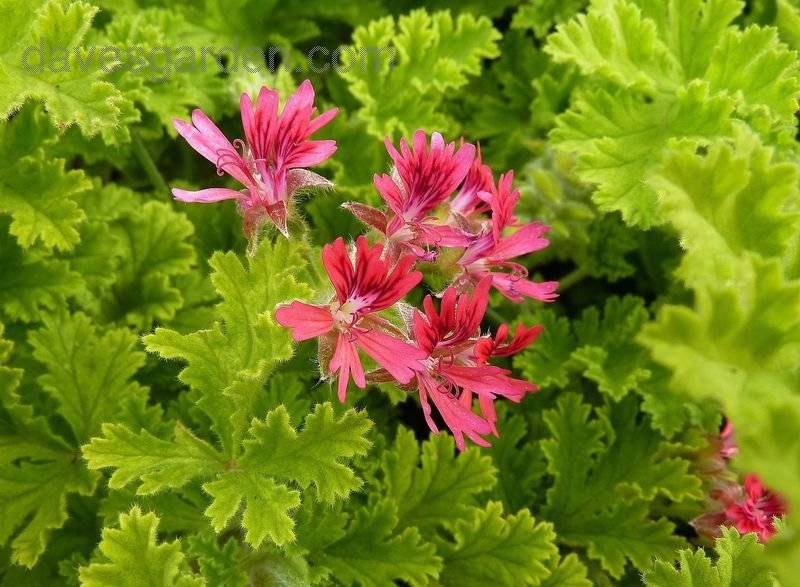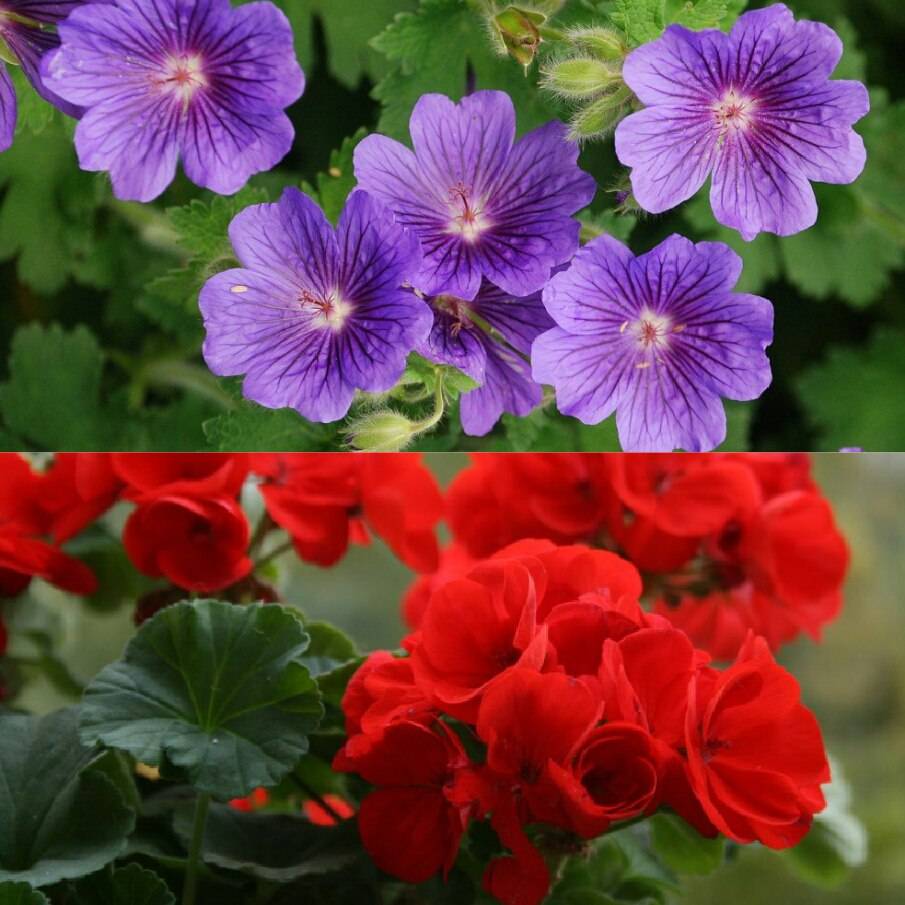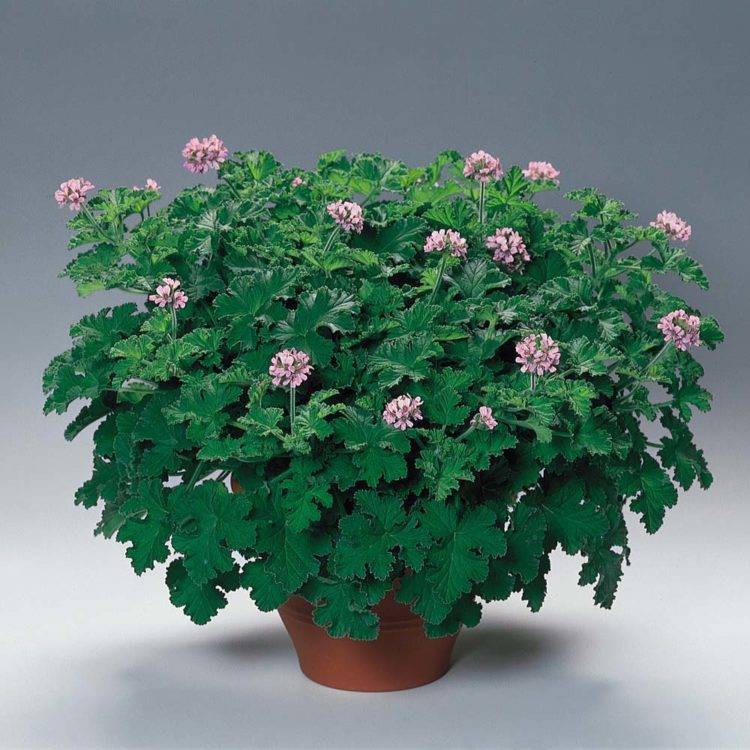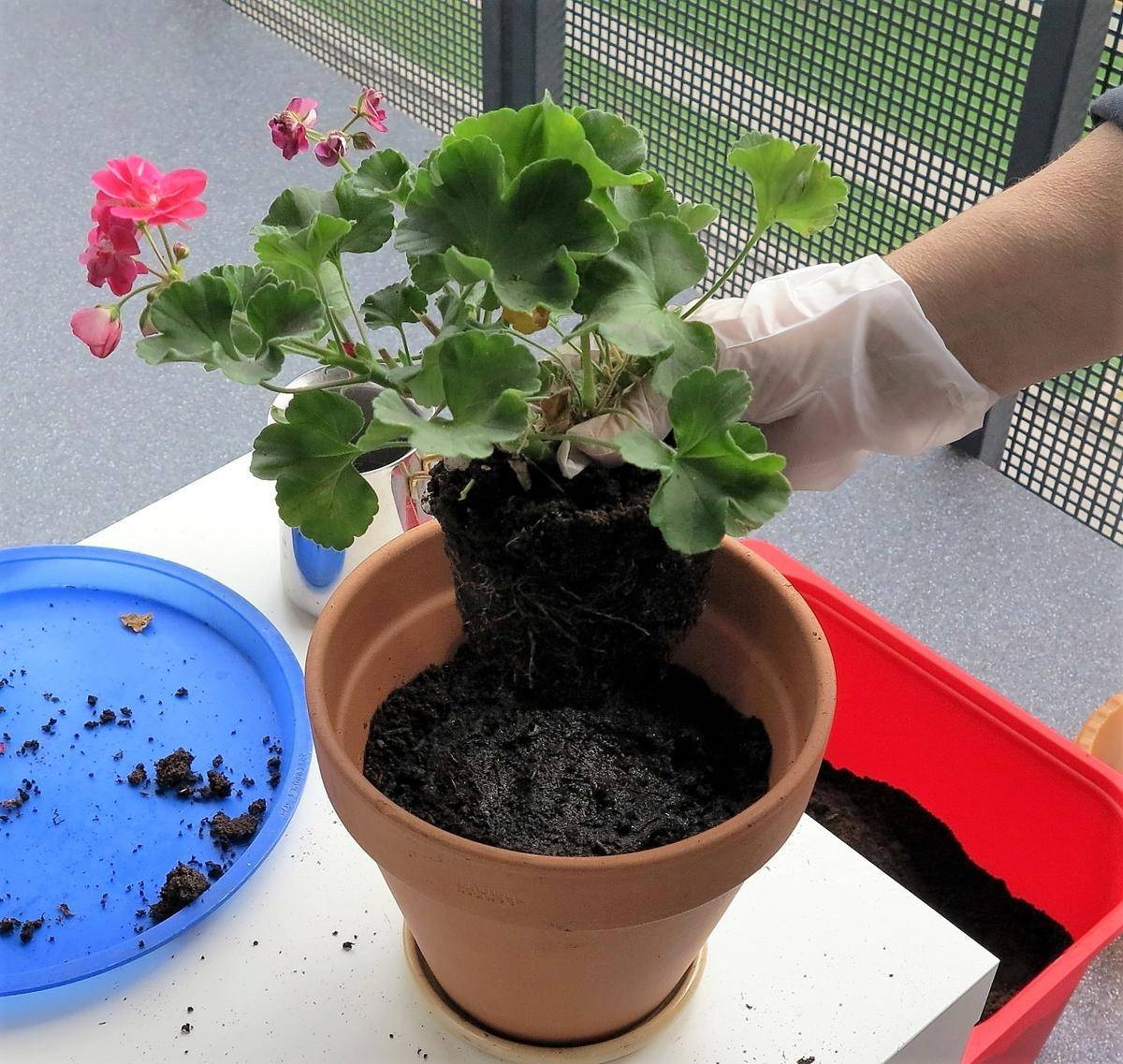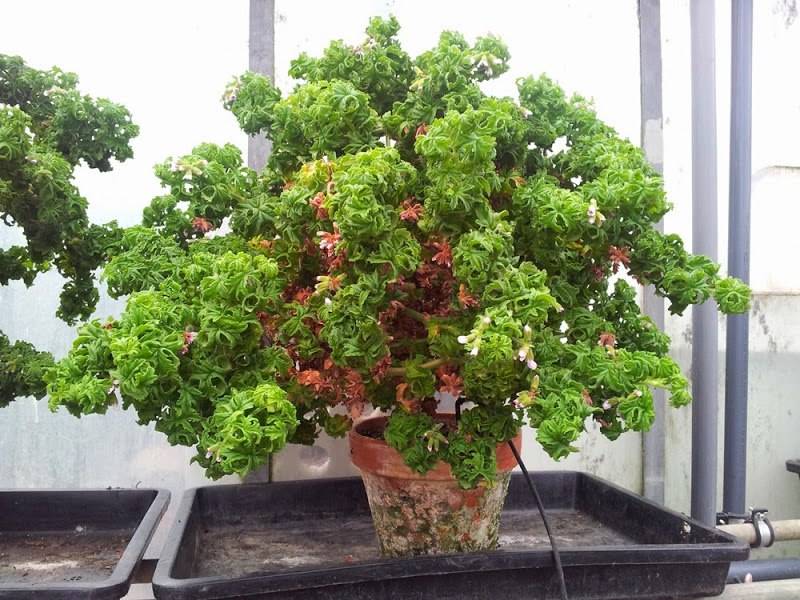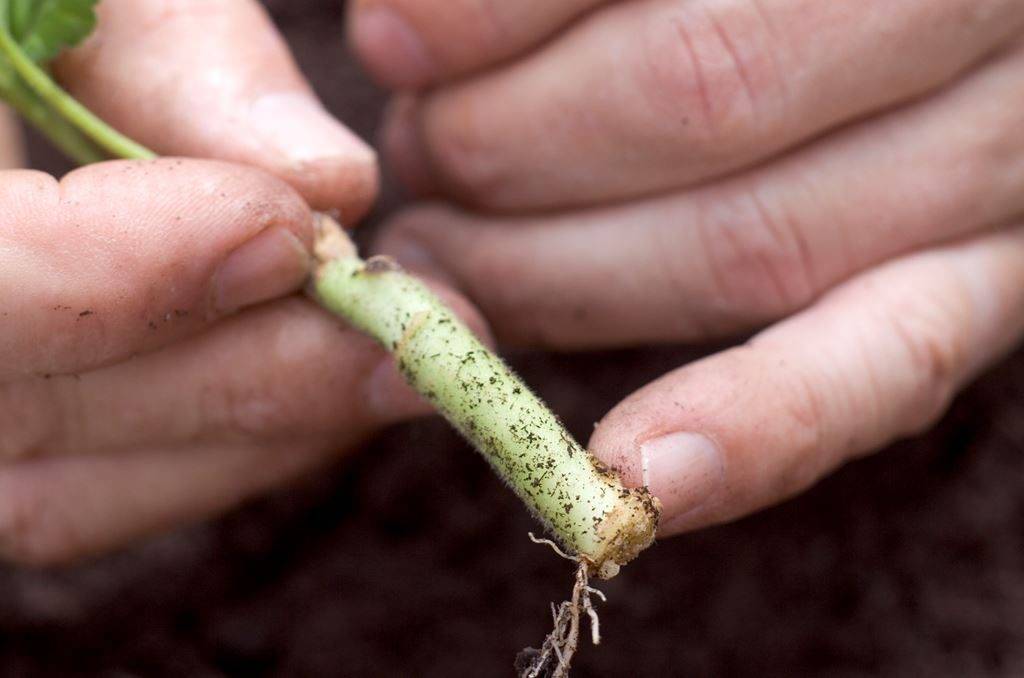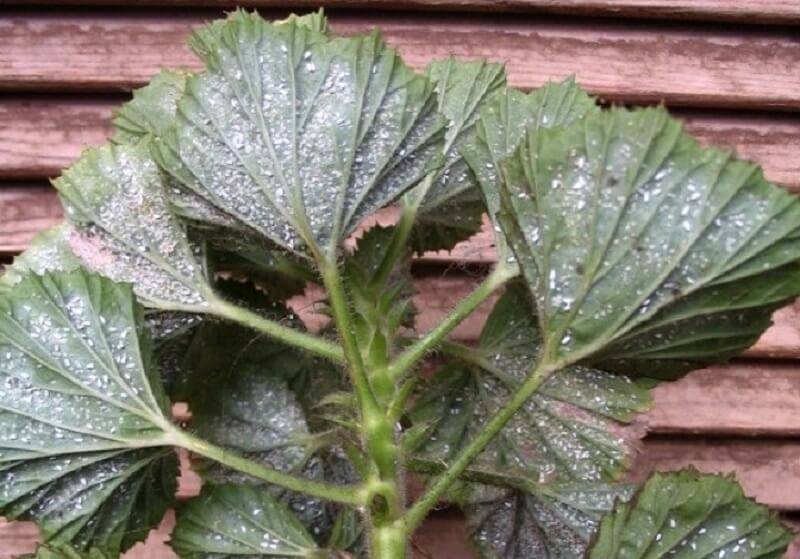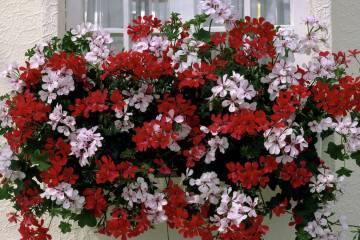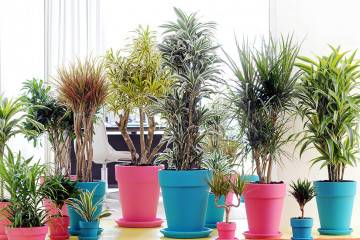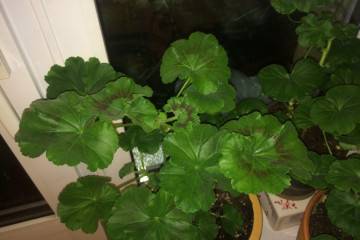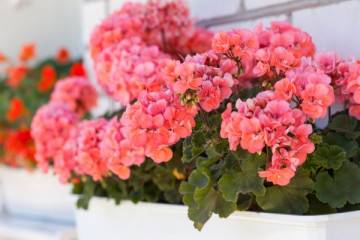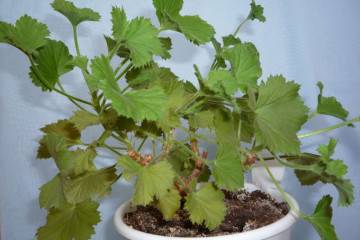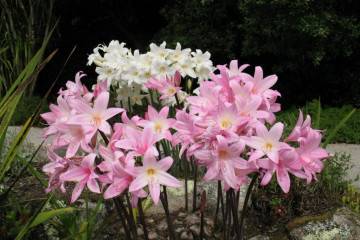Fragrant geranium - varieties of varieties
Content:
Fragrant geranium (Geranium gourmet) is a perennial from the Geraniev family. Translated from Greek - "stork", since after the leaves of the peduncle have fallen off, the fruits resemble the beak of a stork in shape. The homeland of the plant is South America, at the beginning of the 18th century geranium spread throughout Europe, it became especially popular in Great Britain due to its bright flowering, pleasant aroma, unpretentiousness in care and the benefits of foliage.
Description of the plant
Geranium looks like a flower with upright, strong stems covered with alternating terry leaves, which, when touched, spread the plant's characteristic aroma.
Flowers are small, symmetrical, consist of 5 or 8 petals, do not gather in lush inflorescences, are scattered singly throughout the plant. One plant usually produces 10 pedicels.
Geranium and Pelargonium Difference
At the end of the 18th century, the scientist Karl Linnaeus, when compiling a classification of plants, combined two representatives of the Geranium family of geraniums and pelargonium (pelargonium graveolens) into one species, by the name of the first.
Despite the general similarity, the plants differ in appearance. The main difference is the shade of the inflorescences - pelargonium blooms white or all shades of red, for example, the grandeur variety, but by no means blue, a similar shade is characteristic only of geraniums.
Another important difference is the homeland and the necessary growing conditions.
- Geranium grows in the wild conditions of a temperate climate, therefore it perfectly tolerates wintering in the open field.
- Pelargonium, on the other hand, is a heat-loving plant from South Africa, therefore it can grow only in indoor or greenhouse conditions, it is useless to care for it in the open field, since it will immediately die with the first frost.
As a result, confusion often arises when in catalogs the plant is called, for example, lemon geranium, and the inhabitants believe that it is lemon pelargonium and are searched for by this name.
Geranium and fragrant pelargonium: varieties and varieties
Many years of experience and the work of breeders allow today's growers to grow geranium and pelargonium with flowers of various shades. In addition, each variety has its own aroma, for example, there is geranium with the smell of lemon, rose, orange, chocolate, nutmeg, etc.
- Lemon geranium. An unpretentious flower with an average height of 0.7 m, but can reach up to 1.5 m in height, which makes it popular in garden beds. The leaves of the plant have a characteristic shape in the form of bright green saturated snowflakes, the touch of the wind or hands to which spreads a spicy aroma with hints of lemongrass throughout the garden.
- Pelargonium Candy danсer is distinguished by its compact size and fluffy shape, which is acquired and maintained by frequent pinching.This variety is characterized by carved, dark green and terry foliage, spreading the aroma of mint and lemon balm, in some cases the aroma resembles the most fragrant oriental sweetness - Turkish delight. The flower cannot stand direct sunlight, preferring partial shade. The petals have a delicate pinkish tint, with bright crimson blotches.
- Geranium with carved leaves "Chocolate" differs from all varieties with a color-changing foliage mix of chocolate and mint closer to the edge. Light-colored flowers are collected with a hat over the greenery.
- Geranium Ardwick Cinnamon looks like miniature bushes with foliage resembling the top view of green trees with a rich cinnamon aroma. The long flowering period of small, white, silvery inflorescences makes this variety popular for decorating flower beds.
- The Charity pelargonium variety is characterized by delicate light green foliage with a white border, spreading the smells of rose and orange, for which it received the second name orange. The flowers are collected from five elongated pinkish petals with more intense blotches.
- Geranium Gemstone scent is reminiscent of citrus scent. Low bushes up to 0.5 m tall with light green leaves in the form of a heart with a white border bloom with delicate pink buds, splendor and many layers resembling miniature peonies. This variety looks harmonious in combination with the compact garden geranium mabel gray.
Fragrant geranium: home care
If we talk about fragrant, odorous or lemon geraniums, then leaving involves observing a few simple rules. They will be discussed below.
The best place for growing varieties of gourmet geraniums, as they are also called, is the window sill in the southern part of the house. It is not necessary for the plant to provide shelter and partial shade, since most varieties of geraniums bloom poorly or do not bloom at all in insufficient lighting.
The air temperature in the room during the warm season should vary between + 20- + 30 ° С, therefore, in the summer months it is recommended to take geraniums out to an open loggia or veranda. In winter, the plant feels great, staying on the windowsill, at a temperature of + 8- + 12 ° C. Overwintering at higher temperatures can harm geraniums.
Watering rules
Fragrant geranium prefers moderate soil moisture, tolerates aridity quite persistently. But an excess of moisture in the soil leads to the fact that the roots of the culture begin to rot, and the upper part of the bush wither and wither.
In the warm season, it is recommended to water the fragrant geranium abundantly 2-3 times a week after the topsoil has dried to a depth of 1.5-2 cm. It is recommended to drain the excess water that has seeped through the drainage holes into the pan half an hour after watering.
In winter, the plant slows down the metabolic processes inside, consuming less water, so the frequency of watering is reduced to 1 time in 7-10 days.
Planting capacity
The size of the pot directly affects the growth and abundance of flowering lemon pelargonium or geranium. In small pots, geraniums bloom brightly and for a long time. Small containers are ideal for young seedlings.
Large diameter pots provoke intensive root growth and abundant green mass. For a comfortable growth and development of the plant, a container of 12-14 cm in diameter and approximately the same height is sufficient.A wide pot or container is recommended for multiple plants.
Transfer
Pelargonium fragrant is transplanted once a year, but it is possible more often if there are signs that the flower is cramped, for example, the abundant density of the green mass. The transplant container should be 2-4 cm in diameter larger than the previous one.
You can transplant fragrant geraniums at any time, regardless of the season, since the unpretentious flower quickly takes root. Many gardeners recommend replanting the plant in the spring months, when it speeds up internal metabolic processes and recovers in a short time. During the budding period, the transplanted plant will be forced to direct all forces to adapt the roots to the new environment, which affects the duration and abundance of flowering.
You can understand that a flower should be transplanted by the following signs:
- geranium has stopped growing and growing green mass;
- an increase in the frequency of watering due to the rapid drying of the soil, since the roots take up all the free space in the pot and require more moisture;
- the overgrown root system is visible at the bottom of the pot through the drainage holes;
- when removing the plant from the pot, together with the earthen lump, there is a complete enveloping of the soil with roots.
Before planting, a new pot is disinfected with a disinfectant solution. Water is pre-poured into a clay pot for a couple of hours, pulling out toxic substances and fumes released during clay firing. Then the ceramic pot is thoroughly dried and filled with potting soil.
At the bottom of the container for planting, a drainage layer of expanded clay or small pebbles of 3-4 cm is necessarily laid out, on which a small layer of soil is poured and geranium is installed along with an earthen lump. The voids on the sides of the pot are densely filled with moistened soil.
Pruning
Pruning or pinching young shoots allows you to form a geranium crown, the absence of such a procedure will lead to active stretching of the stem with a small amount of foliage. Faded inflorescences, damaged or dry shoots are cut off without fail. Long shoots can also be cut if desired.
You can cut geraniums until December, with the onset of which until March the flower is left alone. In the spring, it is recommended to cut loose and long shoots, allowing the geranium to release new leaves and lay many buds for lush flowering. At least 3 buds should remain on each cut shoot, which is a guarantee of lush flowering.
Flowering features
Most varieties of scented geraniums bloom from May to October for about 40 days. Some varieties have a year-round flowering cycle.
Geranium produces single, paired or collected in inflorescences in the form of zonal buds, the petals of which can be of various shades. The variety affects not only the color and duration of flowering, but also the shape of the inflorescence and the number of petals on it.
On average, one inflorescence consists of 5 or 8 delicate velvety petals, in the center of which a box-shaped fruit in the form of a stork's beak ripens.
Reproduction
Representatives of the Geraniev family reproduce in three ways: by seeds, cuttings or roots.
Shoots cut during crown formation can be used as cuttings. It is also allowed to purposefully cut the stalk at any other time.
Having planted an autumn cutting, you can expect flowering only in summer. Cut and planted in spring, the stalk will bloom in the coming summer, but cutting will lead to inhibition of flowering on the mother bush.
Healthy shoots 7-10 cm long are cut as cuttings, the cut site is treated with a preparation to stimulate root formation, the lower leaves are removed. After that, the planting material is planted in a well prepared in advance. You can also root the cuttings in a container with water with the addition of 1-2 tablets of activated carbon; after the roots appear, the seedlings are planted in the soil.
Reproduction by roots is carried out if a young sprout has appeared on the root in the aerial part away from the mother plant. In this case, the mother root is divided so that each new sprout has a part of the root system.
Geranium seeds are harvested from a ripe fruit or bought in a store. A soil mixture of sod land, peat and coarse sand is pre-mixed in a ratio of 2: 1: 1. Geranium seeds are placed in a disinfected planting container and soil mixture, lightly sprayed with water and sprinkled with a thin layer of sand. The container is covered with a glass lid or cling film with several ventilation holes and put away in a warm place. As soon as the first shoots hatch, the film is removed and the container is rearranged in a warm and bright place.
The natural cycle of seeds until they hatch without such stimulation can take up to 3 months.
After 2 weeks, as the first shoots appeared, it is recommended to dive them, and after the appearance of 6 leaves, pinch them.
Possible growing problems
Geranium expresses the lack of useful trace elements with yellow leaves, while an overabundance of fertilizers leads to a non-flowering species for a long time. Therefore, it is recommended to strictly observe the regimen and dosage of mineral fertilizers. A small amount of light and heat forces the flower to stretch upward, which affects the decorative properties of the plant.
Drooping stems and wilting of unblown buds indicate excessive watering and high humidity, which can also lead to root rot.
In addition, scented geraniums can be infested with diseases or pests such as ticks, aphids, leafworm caterpillars, whiteflies, mealybugs, or root rot.
The fragrant geranium is considered an unpretentious plant. But in order for the plant to delight with its spicy aroma and bright flowering for more than one year, you need to follow the simple recommendations described in this article.
